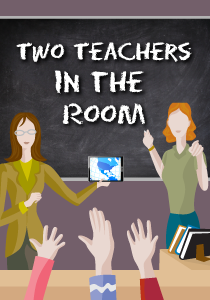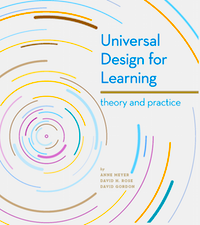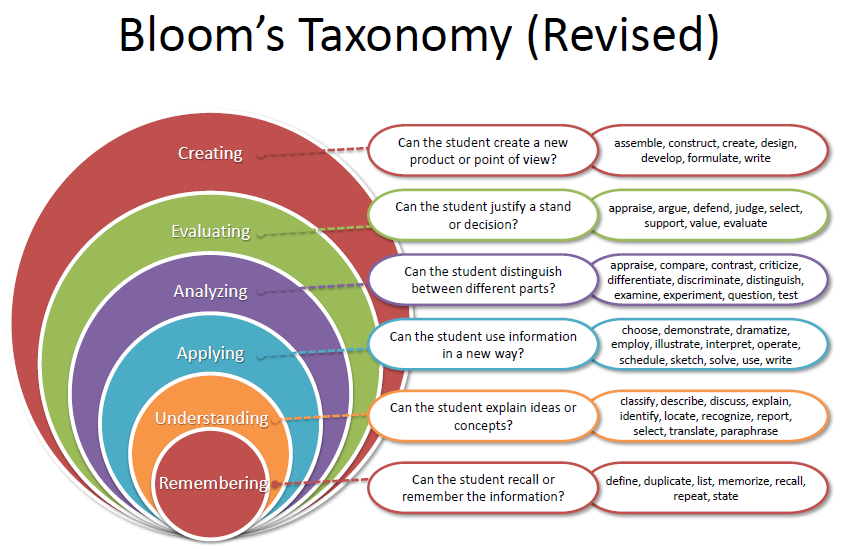The Intersection of UDL and Bloom’s Taxonomy
A MiddleWeb Blog

The learning process for teachers is not any different from the learning process we need to set up for our students in our classrooms. We are constantly connecting prior knowledge with new information. It’s the way we naturally crave and make sense of knowledge—we associate what we know with new knowledge.
We should never lose sight of validated practices from decades ago that have great potential to strengthen our instruction in our current diverse classrooms.
Bloom’s Taxonomy is one those validated best practices that has stood the test of time and our evolving efforts to educate our students. Bloom’s should not be forgotten or pushed aside as “something I learned in college” a long time ago. We should eagerly embrace it within our 21st Century mindset of meeting the needs of diverse learners.
There is also a natural, easy alignment between Bloom’s Taxonomy and Universal Design for Learning (UDL). Together, they can guide teachers to create accessible, rigorous learning environments.
Accessing Bloom’s and UDL
Bloom’s Taxonomy has evolved over the decades from a powerful way of classifying types of thinking and questioning to a way of empowering students to take action to create a meaningful learning process. Bloom’s Taxonomy has gone completely 21st century. You may look here or here to see the ubiquitous evolving effectiveness of Bloom’s Taxonomy over time.
The revised Bloom’s Taxonomy (Anderson & Krathwohl, 2001) continues to be a part of important instructional decisions teachers make to create access between a rigorous curriculum and the needs of variable learners in any classroom.
The Center for Applied Specialized Technology (CAST – Transforming learning through UDL) is also continuing to evolve as it supports teachers in designing curriculum so that all learners may access the rigor and high expectations in order to be the best version of themselves as learners. Check out CAST’s redesigned website “Until learning has no limits”— it is completely inspiring!
The Ease of the Bloom’s Taxonomy and UDL Connection
A quick review of the revised Bloom’s classifications reveal that they include guiding students to think and act upon their thinking with varying depths of understanding. All levels of thinking are important, but educators must remember to vary the levels to encourage all students with the opportunity to deepen their understanding.
And the UDL Guidelines connect seamlessly, as they support teachers to create higher levels of learning by considering options for guiding students to access the knowledge, skills, and strategies they need to become expert learners.

“The Differentiator” at byrdseed.com is another helpful online resource to consider if you’re interested in ensuring that your learning targets are aligned with the rigor and differentiation needed to meet the needs of all learners.
As you begin to gather resources and lessons, visit the CAST UDL Exchange to get you started. And when you are ready to really dig deep into creating UDL lesson plans, make sure to learn and share at the CAST Lesson Builder site. For even more supports, check out additional UDL learning tools and then come back to share how you are inspired to create access to higher level thinking and actions in your classrooms.
What connections, questions, or plans are part of your reflective practice?


































Hello Elizabeth – it’s Dr. Pete Post again and it is always exciting for me to direct my students from Trinity Christian College to your blog for its wealth of information and genuine touch of the reality of teaching. Many of my students in the course I am currently teaching are, in fact, teachers that are also working to achieve BCBA certification as a behavior specialist. I’m so impressed with their desire to keep working to find ways to work with ALL students and the co-teaching model often provides good support in that regard.
I know my students will enjoy perusing your blog and website.
Hello, Dr. Pete Post! Yes, it’s always great to hear from you and your students. It’s through a variety of perspectives that keeps us all moving and thinking forward! Many thanks!
All the best!